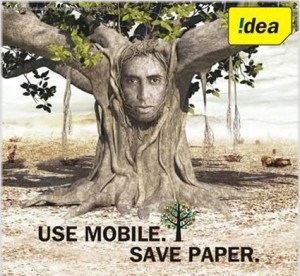The essential idea behind activism is to get a person to do something about anything that is not going right. The general idea of an advertisement is to, as such sell something that people may want to buy. When the two meet, however, a wide gambit of mixed signals and confusion can ensue. Advertising for a cause and solely for that cause is not entirely unacceptable, but advertising for a product through activism or pertinent social issues is just plain offensive.
Why is it offensive?
Because it is similar to drinking a large amount of ‘deshi daaru’ in front of your parents and then saying ‘Paani hi toh tha, boss’ before dropping down in to a dead faint at their feet. Also akin to saying:
By this I mean to say that the advertisement is only selling a product. They do not actually give a damn about the social issue in question, unless the company producing the product does anything. The chances of the company doing anything are quite extraordinary since they are already receiving brilliant PR through the advertisements.
Example:
Putting a Bollywood actor’s head on a tree and animating it only makes the tree look creepy. It does not solve any shortage of foliage or the illegal deforestation of areas. It also generates good publicity for the brand that is being advertised without raising the essential question of whether or not the brand in itself is practicing what it preaches.
Therefore,
While
is at least a much better, more viable option.
Another problem that often arises when advertising and activism mix is that the activity becomes identifiable with the brand. The problem of people not voting during elections or staying unaware of the politicians participating from their constituency is not limited to merely the urban and sub-urban centers. There is a very distinct sense of
in the Indian media. A website cannot help people who cannot access the internet or have extremely limited electric supply, nor can an ad campaign. But due to essentially effective advertising, not activism, there is a ‘buzz’ generated which makes people think they are doing something by registering online.
Thus the brand profits, regardless of any actual change in the general scheme of things. Therefore it becomes not only a question of ethics, but also of exploitation, unless a huge amount of change is actually brought in before the desired publicity.






